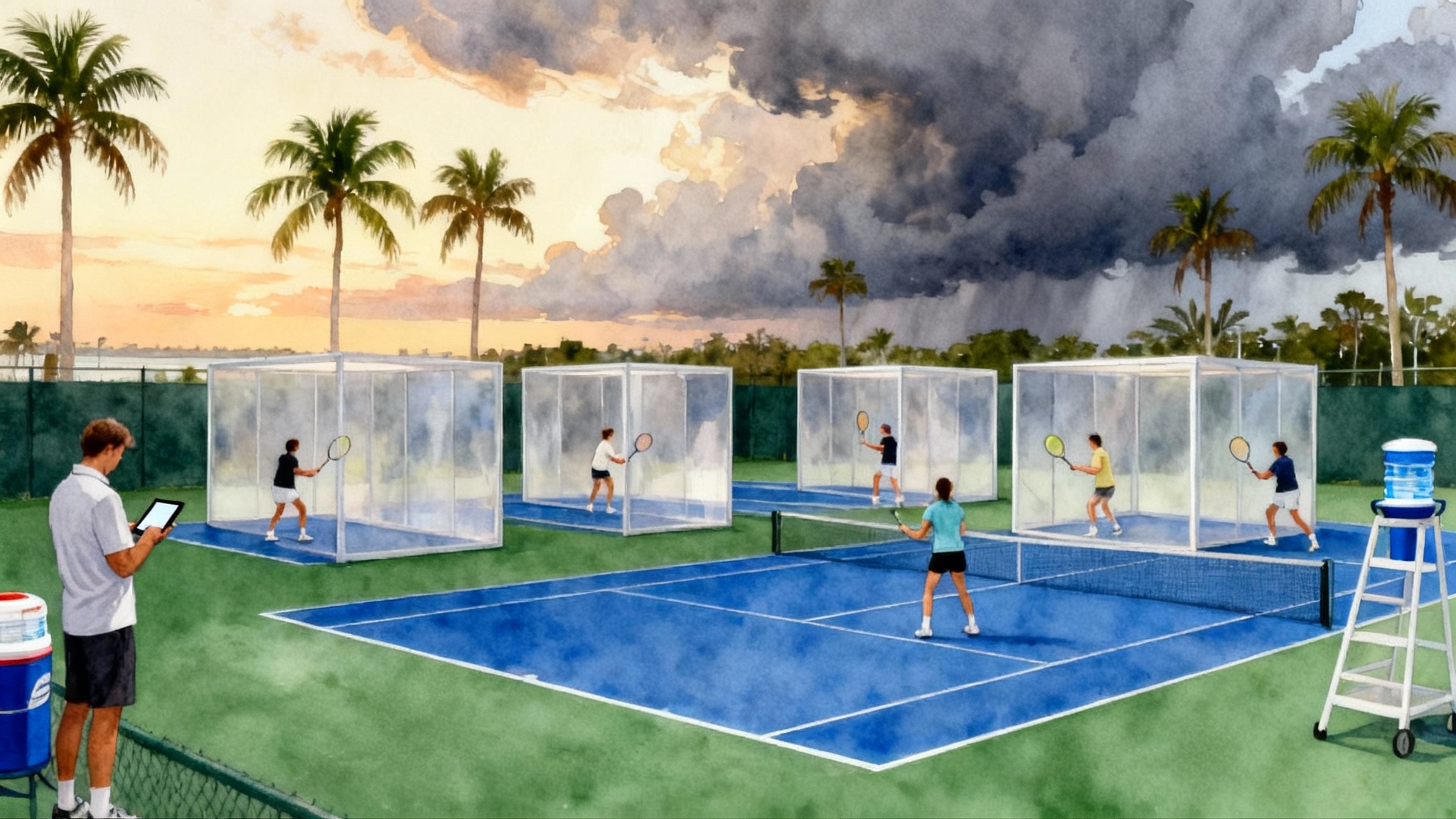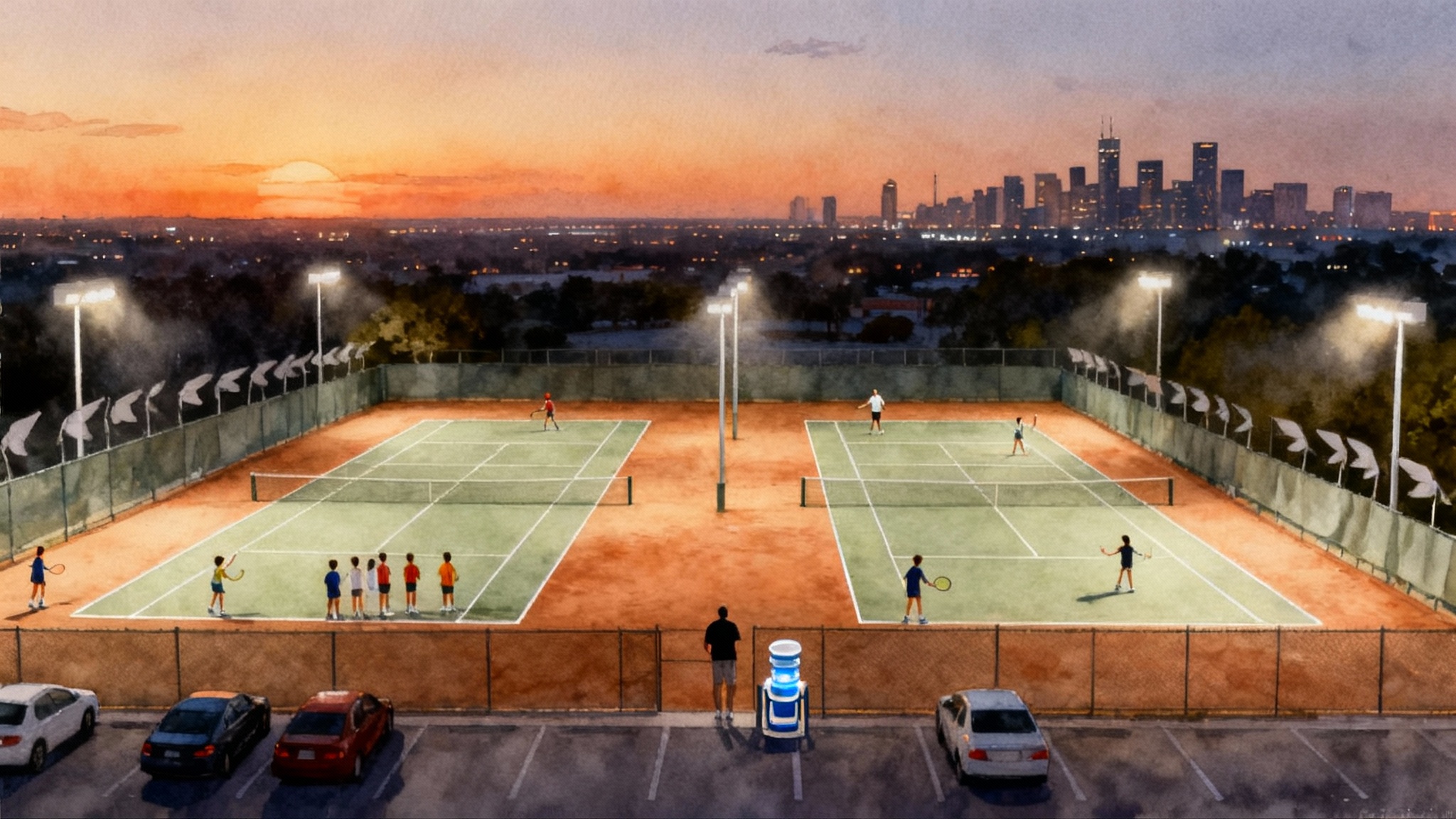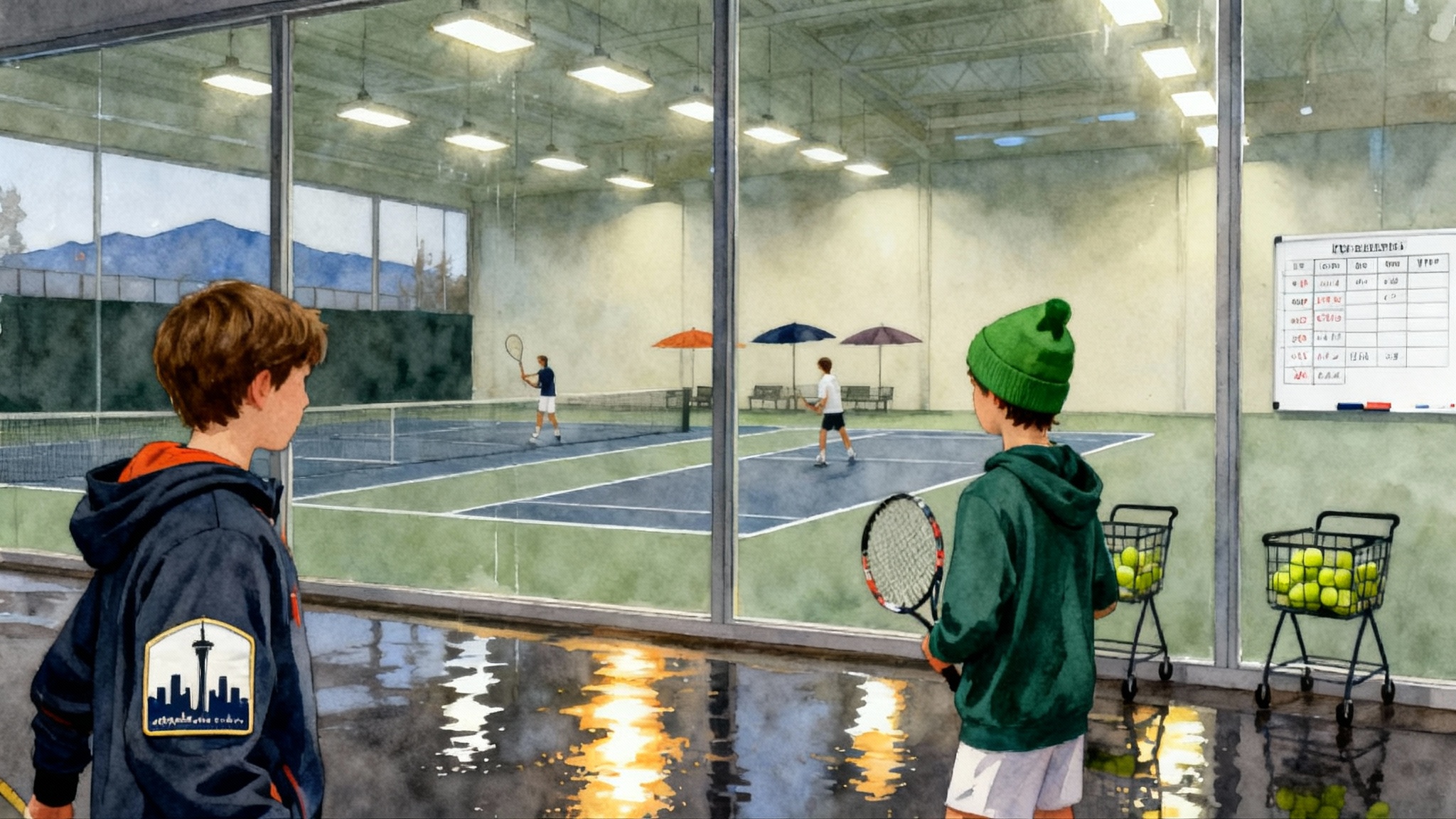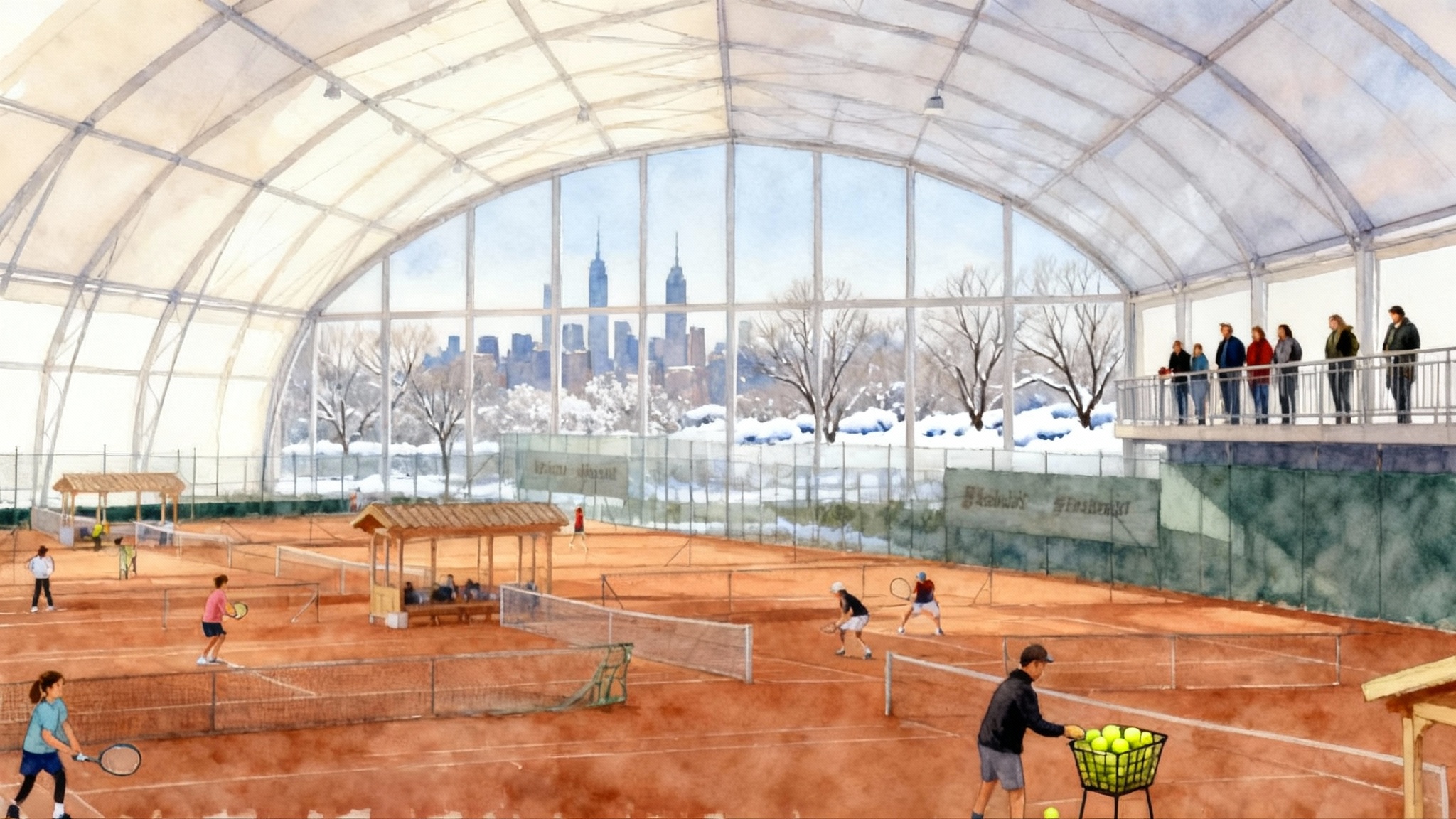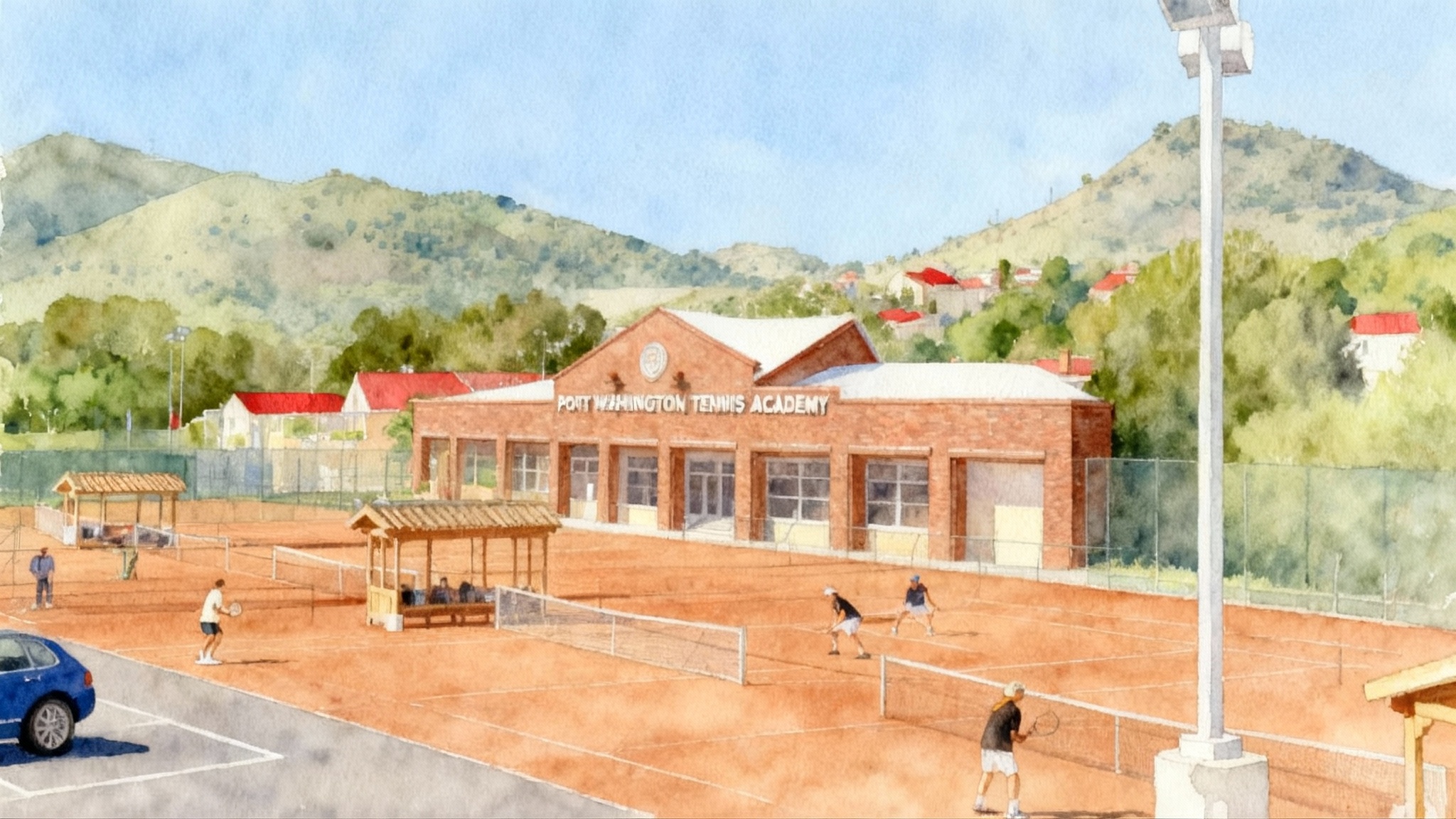Best Los Angeles and Orange County Tennis Academies 2025–2026

How we tested and what this guide covers
This is a parent-first field guide to the junior tennis landscape across Los Angeles and Orange County for October 2025 through August 2026. We visited sessions, observed workouts, spoke with coaches and parents, and ran short skills checklists with players where programs allowed. Our goal is practical clarity: how to match your athlete’s needs to a program’s training model, schedule, and results without wasting months on trial and error.
If you are also comparing Northern California, see our Bay Area academies guide.
What we compare:
- Price bands and what those prices actually buy in coaching attention and competitive reps
- Weekly schedules, including school-day friendly blocks and after-school cohorts
- Court surfaces and their impact on development
- Homeschool and day-school tracks, how they are structured, and who benefits
- Universal Tennis Rating match play availability and quality
- College recruiting outcomes, what to ask for, and how to interpret claims
- Tournament travel cadence, especially for Southern California Section events
- Commute math using real-world drive windows, not just distance
- Tryout and assessment windows from October 2025 to August 2026
Throughout we spotlight two program types that shape many families’ choices: city-run programs such as Beverly Hills Tennis, and coach-led programs such as Tustin Tennis Academy. These two poles illustrate how governance and coaching structure drive cost, schedule, and progression.
The shortlist: programs to know in 2025–2026
This is not every program in the region. It is a parent-tested starting point that covers distinct models so you can make efficient comparisons.
City-run spotlight: Beverly Hills Tennis
Beverly Hills Tennis operates city programming at public courts with a clear seasonal catalog, consistent time blocks, and straightforward registration. Strengths we saw included predictable staffing on popular after-school days, a wide range of entry points for new players, and court management that kept groups moving. Because it is a municipal model, price per hour typically undercuts private academies, and the environment skews family friendly with strong beginner and intermediate pathways. Advanced players can find value if they supplement with targeted private lessons and higher-level match play. Court surfaces are hard courts, which aligns with most Southern California tournaments. Parents who want a reliable, budget-aware schedule with minimal surprise fees often start here, then layer private work and weekend Universal Tennis Rating matches as the athlete progresses.
What to ask at a city-run open house:
- How often do the top groups play live-ball points versus basket feeding
- Which days include a designated Universal Tennis Rating match block
- How many players per coach at the highest level
- Whether there is a path into travel teams for sectional events
Coach-led spotlight: Tustin Tennis Academy
Coach-led academies like Tustin Tennis Academy operate with more flexibility, tighter group sizes, and a single coaching philosophy that flows from the head coach to assistants. In our sessions there, we saw detailed footwork progressions, frequent performance feedback, and match-play scenarios layered into drilling. Families who choose this model usually want faster feedback loops, individualized planning, and the ability to form travel squads for tournaments. Pricing is higher than most city-run programs but often includes dedicated Universal Tennis Rating match blocks, video, and fitness integration. Hard courts dominate, sometimes with access to a slow court for pattern training.
What to ask at a coach-led assessment:
- The ratio of closed skill work to live-ball play, and how that shifts nearing tournaments
- The number of Universal Tennis Rating verified matches per month the program delivers
- How the program handles late arrivals tied to school traffic
- Whether they support homeschool day tracks and how academics integrate
Other reputable programs to investigate
- Advantage-style full-time groups in Irvine that pair day training with academic partners
- Club-based academies on the Westside and South Bay with robust high-school squads
- City programs in Newport Beach, Santa Monica, and Torrance that mirror the Beverly Hills model
- Private coach collectives in Fountain Valley, Fullerton, and Mission Viejo that run small afternoon pods
Use the same questions above and the checklists later in this guide to compare apples to apples.
Price bands and what you actually get
Prices vary by governance, coach pedigree, and included services. Here are typical 2025 price bands we observed across Los Angeles and Orange County. Treat them as ranges, then verify what is bundled.
- Entry pathway, primarily city-run: 20 to 35 dollars per hour. You get larger groups, clear progressions, good fundamentals, and a friendly path to your first tournaments.
- Development pathway, mixed models: 35 to 60 dollars per hour. You get smaller groups in top tiers, more match play, and a coach who tracks your athlete’s plan.
- Performance pathway, coach-led: 60 to 95 dollars per hour. You get structured fitness, frequent match scenarios, and tournament planning support.
- Elite small-group blocks or invite pods: 95 to 140 dollars per hour. You get high coach contact, video, scouting, and targeted Universal Tennis Rating gains.
Private lessons across the region typically range from 90 to 180 dollars per hour, with head coaches and former tour players at the high end. When comparing group options, look beyond hourly price. A 90-minute session with built-in verified match play and post-set feedback may outperform a cheaper two-hour block that is mostly basket feeding.
Weekly schedule models you will encounter
You will see three designs repeated across programs, each with a distinct feel and use case.
- After-school cohorts, 3 to 5 days per week, 4:00 p.m. to 7:00 p.m. Players move from footwork and patterns into point play. Strength is consistency. Watch for traffic-aware start times and warmups that account for late arrivals.
- Hybrid day blocks for flexible schoolers, 10:00 a.m. to 1:00 p.m. plus a shorter afternoon session. Strength is coach access and more court time. Works well for homeschoolers and students on independent study schedules.
- Weekend intensives, 2 to 3 hours with Universal Tennis Rating match blocks. Strength is competitive reps and a broader peer pool.
Ask how many live points a player will play in a typical week. A rule of thumb for progression from intermediate to performance groups is 6 to 10 verified sets per two-week cycle, supported by targeted drills.
Court surfaces and why they matter in Southern California
Hard courts dominate in Los Angeles and Orange County, which is helpful because most local tournaments are on hard courts. Some facilities will carve out a slower court for pattern training or have access to clay during certain blocks. If your player is building point construction skills, a slower training environment one day per week can accelerate progress, even if match day is on hard.
Surface check questions:
- Do you have access to a slow court for pattern or defense days
- How do you structure drill tempo to avoid overuse on hard courts
- Do your fitness blocks adjust for court load in peak tournament weeks
Universal Tennis Rating match play that moves the needle
Universal Tennis Rating, often shortened to UTR, is the Universal Tennis rating system that most college coaches and many tournaments follow for benchmarking. It rewards close, frequent competition. The quickest way to move a rating is not just more tournaments, it is consistent opponent quality and frequent verified sets. Programs that schedule weekly or biweekly UTR-verified match play with post-match feedback tend to produce steadier climbs because players get both data and coaching intervention while the match is still fresh.
When you evaluate programs, ask for a concrete UTR plan: how many verified matches per month, how sets are recorded, and which coaches deliver post-set feedback. Then look for a published ladder or internal challenge format that ensures your player sees opponents who bracket their current rating.
Homeschool and day-school tracks
Full-time or hybrid training makes sense for a small subset of athletes. The best fits tend to be:
- Players already competing in the top third of their age division who need weekday hours for reps, recovery, and academics
- Athletes recovering from injury who need flexible loading during the school day
- Students whose schools allow a partial day for sport and who need structured blocks before peak traffic
Strong programs will disclose the academic partner or the independent study structure, attendance expectations, and how they protect recovery. Ask for a typical day plan with time stamps, including meals, mobility, and study periods. The right answer reads like a well-run school day, not a long open gym.
College recruiting outcomes, what to ask and how to interpret
College recruiting stories can be inspiring, but they are easy to misunderstand. Ask for three items from any program that markets placement success:
- A list of placements from the last two graduating classes, with the athlete’s Universal Tennis Rating on the date they committed.
- Names of the coaches who were directly involved in outreach and video, and how many players they each supported.
- A sample recruiting timeline, including which events and video packages were used.
Interpreting the data:
- Men’s Division I programs commonly look for a Universal Tennis Rating in the 11 to 13 range. Women’s Division I programs commonly look for a Universal Tennis Rating in the 9 to 11 range. Division II and Division III have wide bands, and coach fit matters.
- A single high-profile placement can be a statistical outlier. Look for clusters of players landing at similar levels.
- Ask how the program supports late bloomers, since many commitments now happen late in junior year.
Tournament travel: what a realistic year looks like
In Southern California you can build a strong schedule without constant flying. A realistic plan for a player in the development to performance band looks like this:
- Twelve to sixteen local tournament weekends per year, mostly within ninety minutes by car
- Three to six Universal Tennis Rating match days folded into training months
- One or two flyaway trips for experience and college exposure if appropriate, ideally bundled with a campus clinic or observation day
Budget reminders:
- Local weekends cost less, but hotel nights still add up if you chase early starts. Ask your program to cluster entries within a reasonable radius.
- Some programs provide a travel coach for a day rate. Decide in advance which events justify the cost and what feedback deliverables you expect in return.
Commute math: the map rarely lies
Distance is not the variable that breaks families. Drive window is. Here are real-world windows we observed during fall traffic checks.
- West Los Angeles to Beverly Hills courts, typical 12 to 30 minutes from 3:15 p.m. to 6:45 p.m. The short window helps families stacking weeknight practices.
- Irvine to Tustin Sports Park corridor, typical 10 to 25 minutes from 2:45 p.m. to 6:15 p.m. The draw here is day-school flexibility and quick hops among adjacent facilities.
- Newport Beach to Fountain Valley, typical 15 to 35 minutes from 3:00 p.m. to 6:30 p.m. Weekday construction and Friday surges can add time.
- Glendale or Pasadena to Westside clusters, typical 35 to 75 minutes from 2:45 p.m. to 7:00 p.m. This is the window that strains younger players on school nights.
How to run your own commute test in under ten minutes:
- Enter your top two program addresses into a maps app.
- Check three weekdays at two start times, for example 2:45 p.m. and 4:45 p.m.
- Record the longest estimate. Plan around that number, not the optimistic one.
If the longest estimate exceeds your family’s tolerance, prefer a program that offers a Saturday match block to protect weeknights.
Tryout and assessment calendar, October 2025 to August 2026
Exact dates vary by program, but tryouts and assessments follow a predictable rhythm. Use this calendar to time your outreach and avoid waitlists.
- October 2025: Fall assessment weeks. Many programs hold open evaluations in the first half of October and again near month end as school routines settle. City-run programs often add weekend assessment hours ahead of November session starts.
- November 2025: Late-fall placement tune-ups. Good window for intermediate players to move up a band after six to eight weeks of school-season training.
- December 2025: Holiday camps double as evaluations. Short weeks are efficient for sampling a program before a January reset. Ask to be considered for the higher group in the new year if your sets are trending up.
- January 2026: New-year open houses and day-track trials. Homeschool and independent study families should book these early. After-school cohorts fill quickly as high school seasons begin.
- February 2026: Mid-winter tune-ups. Many programs add one assessment day after the first tournament flurry. If your player wants more match reps, this is a good time to request entry into a Universal Tennis Rating ladder.
- March 2026: Pre-spring break placements. If you plan a spring-break camp, ask for a group re-eval at month end to lock your spot for April.
- April 2026: Spring-break intensives. Treat these as audition weeks. Request written feedback and a specific placement target for May.
- May 2026: Summer preview blocks. Programs reveal summer rosters. Book early mornings if your player prefers cooler sessions and less traffic.
- June 2026: Main summer assessments in week one and week three. Ideal for players trying to bump groups before the heaviest tournament month.
- July 2026: Tournament immersion. Many programs reduce formal tryouts but will evaluate during match blocks. If you plan a flyaway, align with college clinics if recruiting is on your horizon.
- August 2026: Back-to-school placements in the first half, then a short pause before Labor Day. Secure after-school cohorts now to avoid a September waitlist.
Pro tip: always ask whether a program keeps a rolling evaluation lane. If yes, you can request a trial set inside a regular practice week instead of waiting for a formal tryout day.
How to choose fast, a three-visit checklist
Visit 1, observe: count live-ball points per player. If a 120-minute session yields fewer than 40 points for your athlete, you need additional match-specific work.
Visit 2, trial: bring a small notebook. Track four items. First serve percentage, double faults, forehand errors by spin type, and whether your player wins more points finishing at the baseline or the net. After practice, see which items the coach also noticed and addressed.
Visit 3, decide: request a 12-week plan. It should list two or three technical goals, a fitness focus, expected Universal Tennis Rating verified sets per month, and two tournament windows. If a program cannot summarize this on one page, plan to do that planning yourself or choose another program.
City-run vs coach-led, how to decide
Choose a city-run program like Beverly Hills Tennis if you value predictable schedules, community atmosphere, and strong fundamentals per dollar. Pair it with targeted private sessions and weekend match play once your player is winning most baseline exchanges in practice.
Choose a coach-led program like Tustin Tennis Academy if you want faster skill cycles, deeper match feedback, and a travel cohort that can share tournament planning. Expect to pay more per hour, and hold the program to clear performance metrics in return.
Final take
The right academy is the one that gives your player the most quality points and the clearest plan, within a commute and budget your family can sustain week after week. Use the price bands to set expectations, the schedule models to build a week your athlete can actually live, and the tryout calendar to pick your moments. Whether you lean toward a city-run program like Beverly Hills Tennis or a coach-led option such as Tustin Tennis Academy, treat the first twelve weeks as an experiment. Measure what matters, then double down where the training, match play, and commute work together. That is how progress compounds in Southern California.
